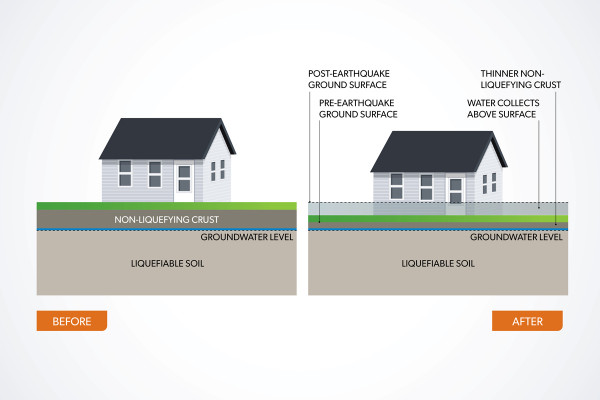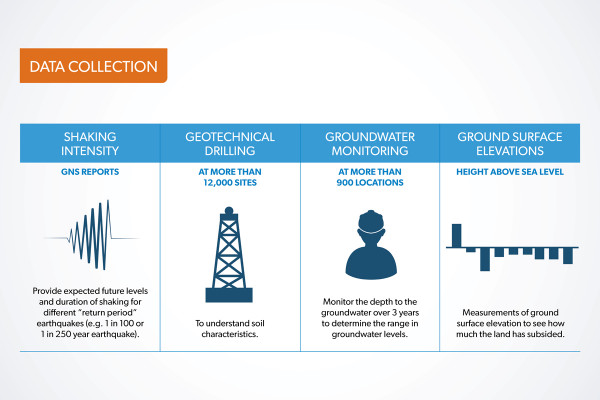Increased Liquefaction Vulnerability (ILV)
In some areas of Canterbury, the 2010-2011 earthquakes caused changes to residential land that mean that some properties are now more vulnerable to liquefaction damage in future earthquakes.
Some properties are now more likely to experience more severe liquefaction damage in future earthquakes.
This diagram shows how some land has changed post-earthquake:

How does a property qualify for ILV?
To identify the properties affected by ILV land damage, Toka Tū Ake EQC has collected data from a variety of sources.

Toka Tū Ake EQC's engineers have been analysing the data to confirm which properties qualify for ILV land damage.
To qualify for ILV, a property must meet three criteria:
- the insured land has material vulnerability to liquefaction damage after the 2010-2011 Canterbury earthquakes; and
- the vulnerability to liquefaction damage of the insured land in future earthquakes has materially increased as a result of ground surface subsidence of the land caused by the 2010-2011 Canterbury earthquakes; and
- the increase in liquefaction vulnerability has caused a reduction in the market value of the insured land and, in case where the pre-earthquake house on the property remains in place and is not to be rebuilt, also the relevant associated residential buildings, such as the house, garage and garden shed.
The first two criteria, which are the engineering criteria, are assessed at up to 100 year levels of earthquake shaking, or in other words, at the levels of shaking which on average are expected to occur at least once in every 100 years.
The engineering assessments are underpinned by the engineering assessment methodology which was developed by Toka Tū Ake EQC's expert engineering advisors, Tonkin + Taylor (T+T). The Canterbury Earthquake Sequence: Increased Liquefaction Vulnerability Assessment Methodology describes the approach used by T+T to assess whether residential properties in Canterbury satisfy the engineering criteria for recognising ILV land damage. The methodology was peer reviewed by an independent expert review panel, comprising world-leading liquefaction researchers from several universities – Canterbury; California, Berkeley; California, Davis; and Cornell.
More details of the engineering and valuation assessment processes can be found in the IFV and/or ILV Land Damage Consolidated Policy Statement.
ILV - Questions and Answers
ILV Engineering assessment methodology
Practical Implications of Increased Liquefaction Vulnerability report